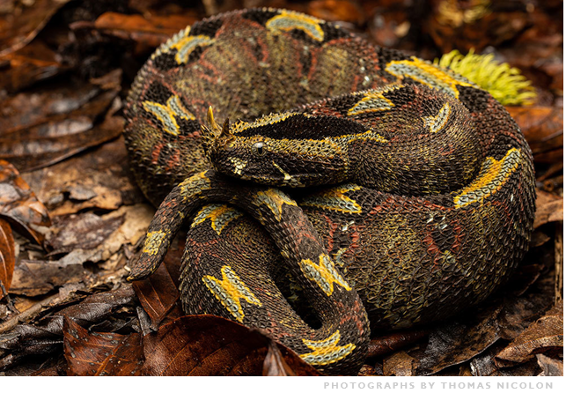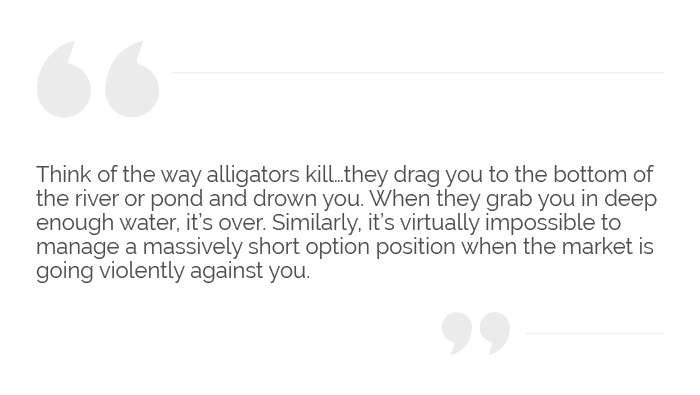So, I read a fascinating article in National Geographic
written by Rachel Bale discussing "The Deadly Thing About Snakes." Read
it here.
According to Rachel, after humans and mosquitoes, snakes
kill more people on earth than any other animal (this actually surprised me).
Now, I have never been super-fond of snakes, but when I think of them, I am
usually thinking of the little garter snakes you see every once in a while. Two
good things about living in a climate where it freezes every year is that our
bugs tend to be smaller, and cold-blooded snakes do not really thrive in some
varieties. For instance, we don't have to worry about happening upon the
rhinoceros raptor (pictured below). What a cutie.

According to the World Health Organization, 138,000 people die each year from snake bites! That's nearly unbelievable. The worst hit areas are in sub-Saharan Africa where there are roughly 30,000 deaths from snakebites every year. Due to poor reporting, this official count is estimated to be only half the true total. I never knew.
In North America, we have only a small handful of venomous snakes, and thankfully most of them are not super deadly. Also, we are lucky to live in a country where anti-venoms are much more accessible. However, snakes are still feared, rightly so in my opinion. According to a Statista survey of Americans over the age of 16, snakes are the most feared animal, beating out both alligators and sharks for the title.
So, you may be asking yourself, what this has to do with
investing, or has Kurt switched fields and become a naturalist?
In the same way that the most feared animals have been
ranked, I believe we should hold a healthy fear of some investment behaviors. There
are potentially deadly mistakes that are made every day. If you wouldn't go
walking around barefoot in a sub-Saharan Rhinoceros Raptor preserve, should you
ever invest without respect for these dangers? I'd like to dive into a couple
of the classic investment hazards that we see, with special focus on how they
might impact fixed income portfolios.
#1—Attempting to Predict the Future (the Snakes)
I have literally been in hundreds of bank board and ALCO meetings over my years in the industry. Almost inevitably, this is the one question I will get from the committee: What do you think will happen to rates? Since I am usually a guest and expected to know a little about the market, I imagine they are usually a little disappointed when I say that I have no idea. Over the last 25 years in the industry, the one lesson I can say I have really taken to heart is that no one knows the future. When I first got involved in fixed income in 1995, I would hear quotes from people like Peter Lynch, who once famously said:
At the time, I thought that was quaint. Everyone on TV and
across the news feeds that I followed did nothing but guess rates and the
markets. Still, to this day, I see all of the talking heads on CNBC and other
financial news channels spending 80-90% of their time trying to predict the future,
and they are still just guessing. It has finally sunk in for me, 25 years later,
and I still don't enjoy much company here!
Dismiss all such forecasts. Concentrate on your investments and your
portfolio. If you are not considering multiple interest scenarios, you are
implicitly predicting rates, and you are setting yourself up for pain and
suffering when you eventually guess wrong. I can't even tell you how many times
I have heard people laud the history of a trusted, old school CEO, who just had
a knack for guessing interest rates. Don't buy it. It's an illusion. It's not
possible.
#2—Underestimating the impact of being short options
(the Alligators)
Coming in right behind snakes on the fear meter are
alligators, and coming in right behind rate guessing for me is getting short a
ton of options when you are being paid far too little. I've written about this
a lot lately (Gamma
Trap and Vega),
so I won't get into the technical aspects again here, but instead I'll reiterate
the visceral pain short option positions can inflict. For this, as always on
this topic, I will harken back to my days in the pits at the Chicago Mercantile
Exchange. Those pits were loaded with what were called "locals". Locals traded their own books, managed their
hedges, and generally had a small edge in most trades. They were almost always short
options. Why? Because the public and most "going away accounts" only buy options. Very few "public" people
intentionally hold short option positions. In fact, the vast majority of public
market participants have accounts that will not allow them to be nakedly short
options. Larger accounts like mutual funds were also almost always be net
option buyers…and so the locals were there
playing the short side, selling options. Yes, they had to watch their Delta and
Gamma situations, but as they were in the market all day, they could, for the
most part, manage these risks. The nice thing about being short option
positions is that very often they expire worthless and the premium gets put in
the pocket of the seller. Even when they don't expire worthless, the handy
Black-Scholes model helped locals size their risks versus rewards to usually leave
them with a small profit.
Unless! Unless there is a significant volatility event (please see my last
post on Vega). These only occur once in a while, but when they do, and they
can literally wipe out short option positions. These events were the only occasions
when I watched people getting physically pulled out of the pits. Losing
everything. Think of the way alligators kill…they drag you to the bottom of the
river or pond and drown you. When they grab you in deep enough water, it's
over. Similarly, it's virtually impossible to manage a massively short option
position when the market is going violently against you.

As I see what banks and credit unions are investing in in the
current market, namely tons of callable bonds with low yields, going short
calls, and long maturities, it reminds me of the days just prior to the
mini-crash of 1998, when I saw grown men being physically escorted from the
pits in Chicago. Locals totally wiped out because the short option positions
that had been tidily profitable, bit by bit, day to day for so long were
suddenly dragged down in a virtual instant.
Side note—looks like alligators are
invading America's golf courses!
#3—Forgetting About Time (the Sharks)
Investors generally think in very short time frames. I once
again think this is driven by the talking head format business news TV.
Everyone wants to know what happened to the DOW, S&P, or NASDAQ in the last
24 hours. But should they really care? What about the hot stock for the next
week? Who cares? In fact, I will bet big money most of us (me included!) can't even
name the stock they were highlighting on CNBC's Fast Money just last week. Yes,
they cover big themes like politics and COVID-19, and those things we will
remember, but we'll forget hot stocks because real investing must incorporate sufficient
time horizons. This is particularly true in fixed income investing. Fixed
income by its very nature takes time to work. We have been talking about the
power of rolling the curve (or not) for over twenty years. The value of understanding
how fixed income investments (not to mention liabilities, loans, deposits,
etc.) change over time cannot be
underestimated. Banking is not a short-term game. Banks make margin over time,
not by tomorrow, or next week but next quarter, next year, and beyond. Combining
a short time view with guessing rates (our first scary behavior) is an even deadlier
combination. Think snakes on a plane flying straight into sharknado.
So, those are my top three "scary animals." Guessing Rates, underestimating
optionality risk, and not incorporating enough timespan into the decision.
I would love your feedback on this topic, or on the topic of
actual animals that freak you out. I was actually surprised to see in the
survey data that the sixth-most feared animal—by Americans, mind you—was the
tiger. Of everything on the list, it is the only one that is almost impossible to
see in the wild and within our borders. Yet 9% of Americans express a fear of
tigers. If I were a mountain lion, I'd be a bit put out by that.
Final, final thought: We may have a lot of political strife
and tension in this country, but one thing we can all be thankful for together this Thanksgiving is our
nation's complete lack of Rhinoceros Raptors!
Be sure to fill out
the form below to subscribe to my weekly blog.


